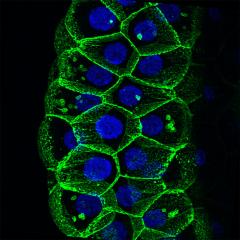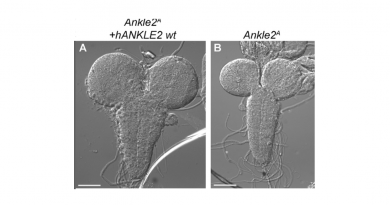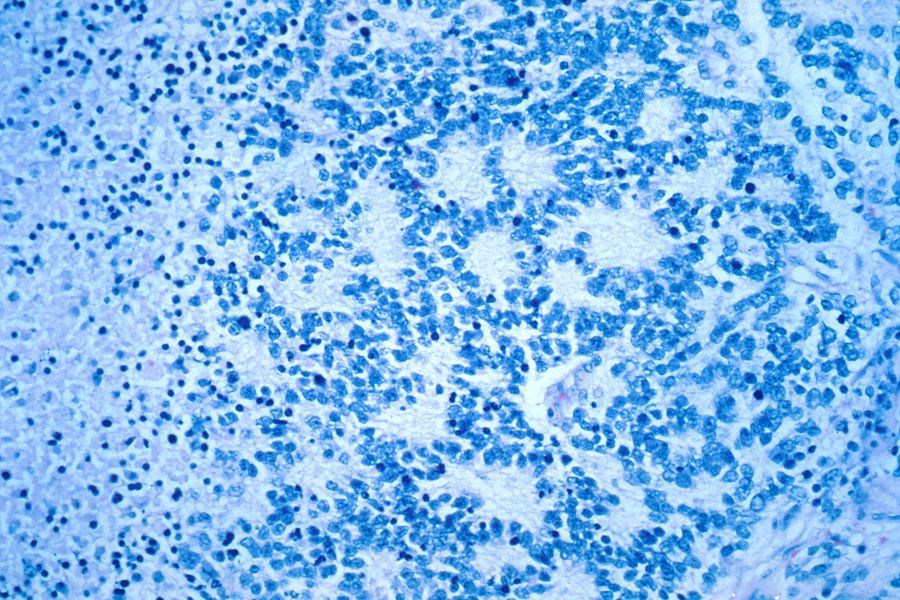A new fruit fly toolkit to understand the impact of SARS-CoV-2 virus in human health
While the COVID-19 pandemic is under control now, the SARS-CoV-2 virus continues to mutate and inflict unprecedented suffering on millions of people in the form of numerous little-understood, lingering symptoms that are collectively termed ‘long-COVID.’ Identifying the underlying causes and therapies for long-COVID symptoms and devising strategies to protect against known and emerging viruses of the coronavirus family remains a top priority in biomedical research. In this study, researchers at Baylor College of Medicine, Texas Children’s Hospital and the University of California at San Diego (UCSD) have taken a step forward to better understand and potentially treat long COVID.

The details of how the SARS-CoV-2 virus multiplies are now relatively well-documented, but the specific aspects of how the virus disrupts the function of many different cells and organs remain a mystery. In the current study published in Cell Reports, the researchers developed a comprehensive toolkit called Drosophila melanogaster (fruit fly) COVID-19 Resources to study the interactions of viral and human proteins.

“By harnessing the powerful genetic tools available in the fruit fly model system, we have created a large collection of reagents that will be freely available to all researchers,” said lead corresponding author Dr. Hugo J. Bellen, distinguished service professor of molecular and human genetics at Baylor and chair of neurogenetics at the Jan and Dan Duncan Neurological Research Institute at Texas Children’s (Duncan NRI). “We hope these versatile tools will aid in the systematic global analysis of the interactions between the SARS-CoV-2 virus and human cells at the molecular, tissue and organ level and help in the development of new therapeutic strategies to meet current and future health challenges that may arise from SARS-Co-V2 virus and related family members.”

“The toolkit consists of fruit fly lines that have each of the 29 viral proteins and 234 of the most critical human proteins targeted by the virus, as well as 313 lines that can be used to evaluate the fly versions of the human genes that are targeted by the SARS-CoV-2 virus,” said co-corresponding author Dr. Shinya Yamamoto, assistant professor of molecular and human genetics and neuroscience at Baylor and investigator at the Duncan NRI. “Moreover, we conducted several proof-of-concept experiments using the new fruit fly lines to validate and functionally assess SARS-CoV-2 genes and their candidate human binding partners.”
Promising findings

“We found that the presence of viral proteins disrupted many biological processes in flies. For instance, several viral proteins were lethal in early stages of fly development and nine out of ten viral proteins caused wing defects in adult flies,” added Dr. Shenzhao Lu, a postdoctoral fellow in the Bellen lab and one of the first co-authors. “Expressing viral proteins in flies and testing their effects using survival or other assays can help explain the function of individual or pairs of viral factors in different tissues. When combined with human proteins, the toolkit also can be used to understand how viral proteins affect human tissues.”

“Second, the toolkit also can be used to screen for therapeutic drugs that reduce adverse cellular effects and improve related symptoms,” said co-first author Dr. Oguz Kanca, assistant professor of molecular and human genetics at Baylor and investigator at the Duncan NRI.

A third way to use this multifunctional toolkit would be to systematically analyze the effect of viral-human protein interactions on the function of the human proteins. “For instance, human protein ATE1 is an enzyme that adds the amino acid arginine to other proteins to alter their functions,” said Annabel Guichard associate specialist at UCSD and co-first author of the study. “Actin, a key protein that is present in all our cells, is one of ATE1 targets. We found much higher levels of arginine-modified actin than normal in the fly cells when the viral protein NSP8 and ATE1 were produced together. Intriguingly, abnormal ring-like structures coated with actin formed in these fly cells, and these were reminiscent of similar structures observed in human cells infected with the SARS-CoV-2 virus. Moreover, when flies were fed drugs that inhibited the activity of the human ATE1 enzyme, the effects of NSP8 were considerably reduced.”

“A defining feature of viruses is their ability to rapidly evolve – a characteristic that has proven particularly challenging in controlling the SARS-CoV-2 virus,” said Dr. Ethan Bier, distinguished professor of cell and developmental biology at UCSD and co-corresponding author of the work. “We envision that the new resources we have generated will offer researchers the ability to easily and quickly assess the functional effects of naturally emerging viral variants as well as to test the biological effects of synthetically produced mutations that could help predict molecular behaviors of potential new variants.”
Others involved in the study and their institutional affiliations can be found here.
The study was funded by several National Institutes of Health grants, the Kyoto Institute of Technology, the Tata Trusts in India, the Jan and Dan Duncan Neurological Research Institute at Texas Children’s Hospital and a CAPES fellowship. The confocal microscopy at Baylor College of Medicine was supported in part by the Intellectual and Developmental Disabilities Research Center, which is funded by the Eunice Kennedy Shriver National Institute of Child Health & Human Development. Confocal microscopy at UCSD was performed at the UCSD School of Medicine Microscopy Core, funded by the National Institutes of Neurological Disorders and Stroke.
Read more here.
Follow From the Labs on Twitter @BCMFromtheLabs.



